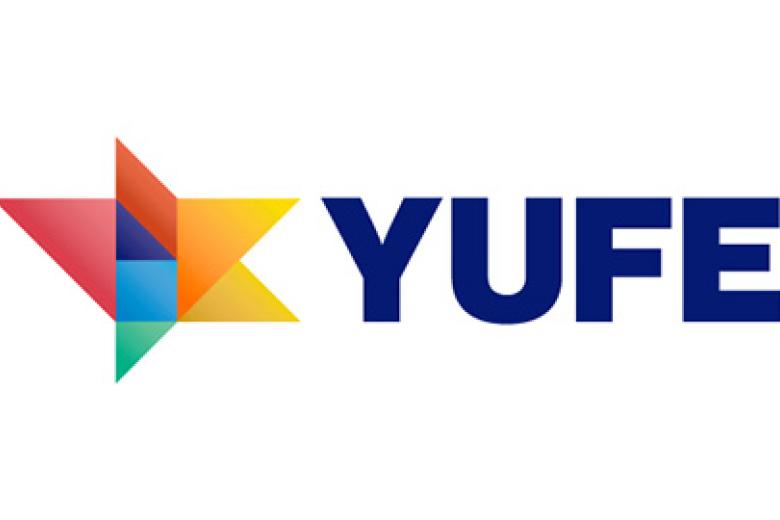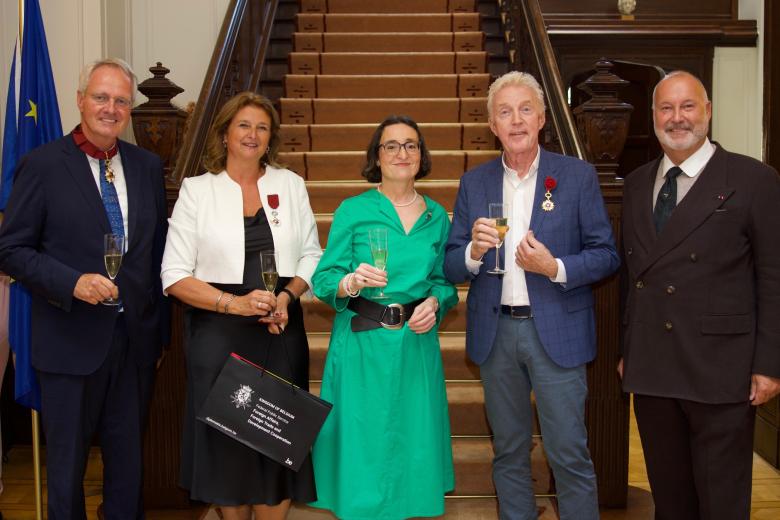MORSE workshop on Circular City Making
In a 2-hour session, 16 students from UM discussed with city makers in Sittard/Geleen and Maastricht possibilities for city making. In 2 groups students brainstormed about the creation of a Circular Fashion Lab and sustained funding for Stadslabs Sittard-Geleen.
René Kemp (professor of Innovation and Sustainable Development at UM) opened the workshop and introduced the speakers: Paulien Strijland (design specialist and co-founder of Stadslabs Sittard Geleen), Job Zomerplaag (studio Europa) and Cedric van Gerwen (a Hogeschool Brabant intern at the Municipality of Maastricht).
Paulien Strijland briefed students about several initiatives of Stadlabs Sittard-Geleen: Huts spot (a place for creative action for children), a bike parking project, a bike Art and Nature project and a garden project in a multi-cultural neighourhood with social problems (Tuinen van Zuid). All projects are experiments involving citizens in a co-creating capacity. A wide variety of citizens are involved (including low-educated people and people with a distance to the labour market). The Stadslab wants to be less dependent on subsidies and students were invited to participate in discussions about this.
After Paulien’s talk, eight students engaged in a brainstorming activity revolving around the question of “How might we realise sustainable financing and participation?” in the context of Stadslabs Sittard-Geleen. In this interactive setting, they identified and defined the actors, activities, and values that drive the initiative. The brainstorm session of 1,5 hours led to the following insights:
Regarding actors, students noted that “the people are the critical resources” of the city lab. Alongside the project partners, they identified senior citizens as possible vital stakeholders that could further support the lab’s objectives in the future. The students also raised the question of how well the needs of people are identified and understood. In addition, they raised the same question regarding the overall demographics of the local community. The students also believe it is crucial to study better the incentives that might motivate people to engage in the city lab. Paulien Strijland noted that data collection and analysis of such needs indeed deserve further attention in the future.
Regarding activities, the students discussed the boundaries that many experiments experience regarding financial sustainability and engaging community members for the long term. One conclusion was that increased funding would not address all challenges in this regard. Instead, the notion of recognition and reward can successfully empower and support those who decide to set up their initiatives. The city lab would benefit from creating (physical) spaces and communication platforms for meetings and encounters to provide a breeding ground for such activities. In addition, some alternative funding methods were discussed, including the idea of a “city coin”, donations, trading, and sponsoring schemes.
Regarding values, the conversations mainly revolved around two central themes. The students emphasised the need for facilitating cultural exchange and mutual understanding through the lab’s activities, striving for inclusivity in the participating communities. In addition, the students stressed the importance of intergenerational dialogue. The city lab provides an opportunity to connect the local youth and students to senior citizens and strengthen solidarity among and across generations. Creating meeting spaces in the city would further contribute to building this value in the community.
Paulien Strijland’s talk and the subsequent brainstorm session was experienced as very inspiring and engaging by all those who attended the workshop. The participating students expressed a strong desire to visit the city lab on location, and some of them would like to get involved through graduation projects and volunteering. The first MORSE workshop has shown the potential and value of the MORSE initiative and similar sessions organised in the future.
Cedric van Gerwen (intern at Gemeente Maastricht) talked about the desire of the Municipality to promote circular clothing through a Circular Fashion Lab. Students were challenged to think about the following issues: what actors are needed for what activities and what is needed to make the involvement attractive for them.
The brainstorming led to the following insights:
- Elderly people and migrants have cloth-making skills they can be utilized (in ways offering co-benefits in the form of social contacts, more confidence and language skills and the training of others in cloth-making)
- The Lab should not only target environmentally minded people and should make use of other appeals.
- Carnival cloths and cloths for special occasions could be made and rented out
- People who bring good quality cloths could be given discounts on cloths that are being bought from Lab-connected enterprises (practiced by Marks & Spencer in the UK https://www.marksandspencer.com/c/plan-a-shwopping)
- Product stories (about the co-benefits) can be used for selling the products (by enhancing the appeal)
- The involvement of artistic people and student designers is a way to create prestige (top-end) cloths (for which people are willing to pay premium prices) creating a stream of revenues
- Revenues from commercial activities can be used to fund social activities
- Clothes can be sourced from new forms of collection and from existing ones.
- Containers for clothing signify that the project has low value; donations to a person (at the Lab) give the donations a human touch.
- Dyeing and re-dyeing can be done with the help of natural dyes (made from beet root for instance).
- Recycling of fibres can be the basis for new cloths.
- The triple helix model for innovation (based on business, government and academia) may not be the best model for serving marginalized groups and for catering to societal needs; the quadruple helix model (with NGOs and citizens involved) and based on social innovation might be a better model.
- Government subsidy schemes for labour market integration and skilling could be harnessed.
There are also issues of competition with existing business (for carnival cloths for instance) and fairness which should receive attention.
Cedric found the brainstorm extremely useful and students enjoyed the generation of ideas on an impactful activity.
The workshop showed the power of collective intelligence and the wish of people to contribute to a good cause.
We plan to have more of those meetings and joint activities, within MORSE and outside MORSE.
|
Nota bene: in the MORSE meeting on education on Friday Oct 29, alumni wished that the curriculum a SBE is more engaged with real life cases, using system thinking and out of the box thinking, with special attention to impact other than profit and the possibility to participate in extracurricular impactful activities. THE WORKSHOP REPORT IS WRITTEN BY RENE KEMP AND JOB ZOMERPLAAG (Photos Aleide Tomson and René Kemp) |
Contact details
Prof. dr. René Kemp| Professor of Innovation and Sustainable Development (Maastricht Sustainability Institute, Maastricht University | Professorial Fellow UNU-MERIT | T: + 31 43 3884405 / GSM +31 6 11017133 | r.kemp@maastrichtuniversity.nl | http://kemp.unu-merit.nl |
Job Zomerplaag | Studio Europa |Programmamaker | Studio Europa Maastricht | www.maastrichteurope.nl | j.zomerplaag@maastrichtuniversity.nl | T: +31 (0) 6 2831 3610
Paulien Strijland |Stadmaker | Stadslabs Sittard Geleen | Markt 34 | 6161 GJ Geleen | +31 (0)6 39 61 15 34 | paulien.strijland@stadslabssittardgeleen.nl |www.stadslabssittardgeleen.nl
Cedric van Gerwen | Student Bestuurskunde Avans hogeschool ’s-Hertogenbosch |Stagiair Cultuur & Economie gemeente Maastricht. +31 6 44107678 | Cedric.van.Gerwen@maastricht.nl
Also read
-
Green light for UM participation in unique YUFE bachelor programme
The UM can start as a degree awarding partner in the new unique bachelor programme Urban Sustainability Studies offered by YUFE (Young Universities for the Future of Europe), an alliance of ten European universities. This week, the UM received a positive outcome of the macro due diligence assessment...

-
Professor Anouk Bollen-Vandenboorn appointed Knight in the Order of the Crown
Prof. Dr Anouk Bollen-Vandenboorn, Director of the Institute for Transnational and Euregional cross border cooperation and Mobility (ITEM) at the Faculty of Law, Maastricht University, was appointed Knight in the Order of the Crown on 3 July, during a formal ceremony at the Belgian Embassy in The...

-
Study Smart gets Dutch Education Premium
Maastricht University's (UM) interfaculty educational innovation project Study Smart is one of the three winners of the Dutch Education Premium 2025. This was announced on Tuesday during the Comenius festival in The Hague.








